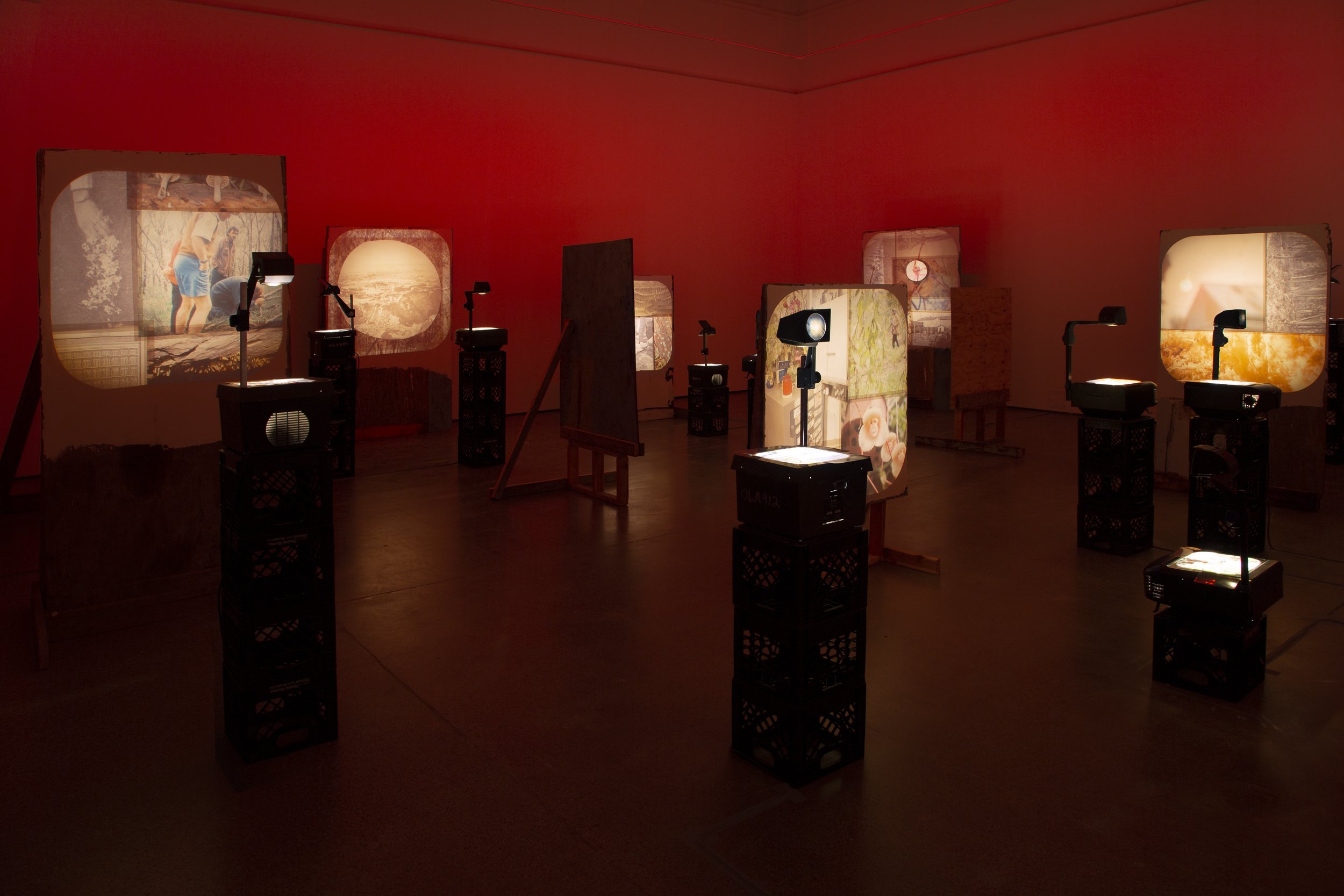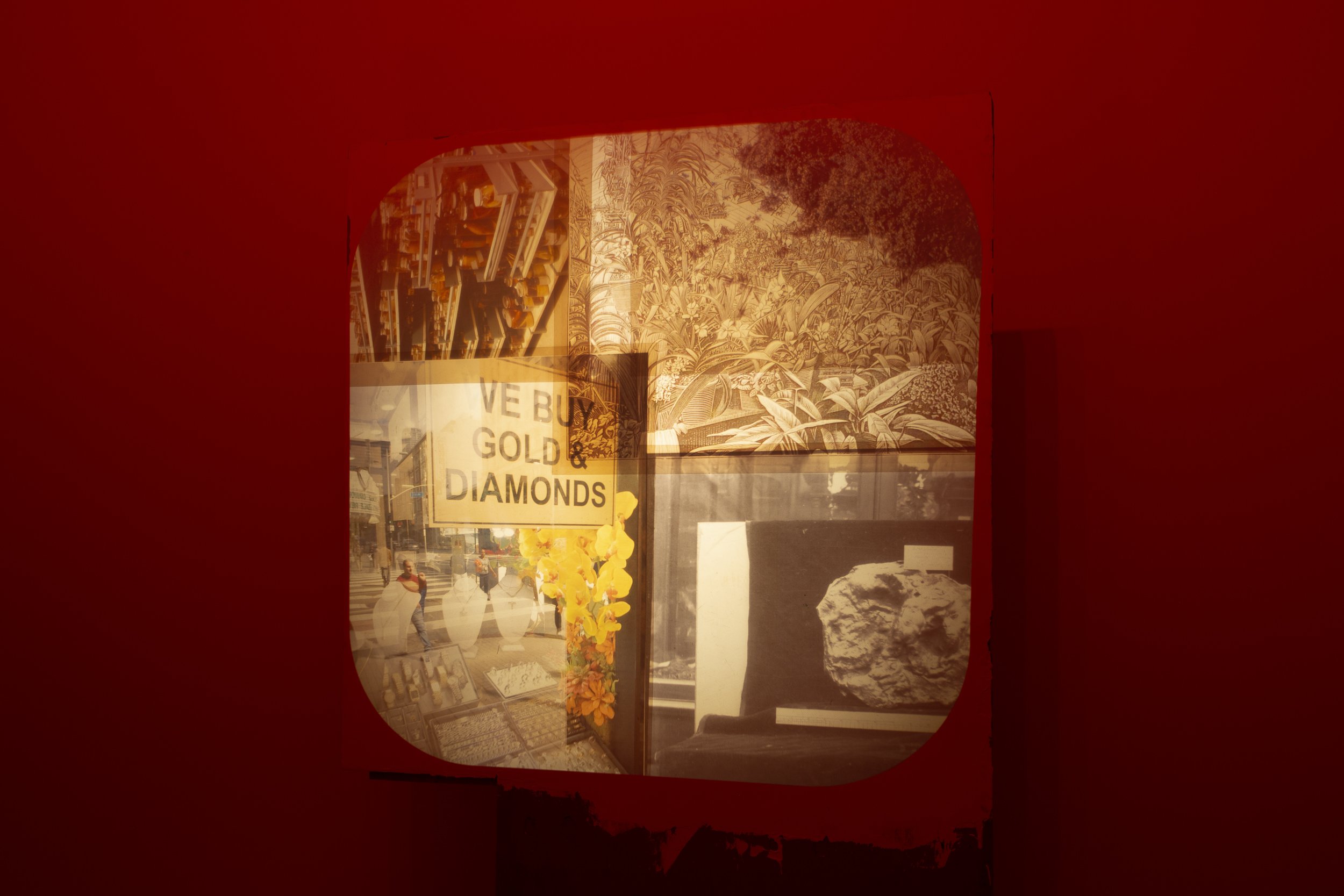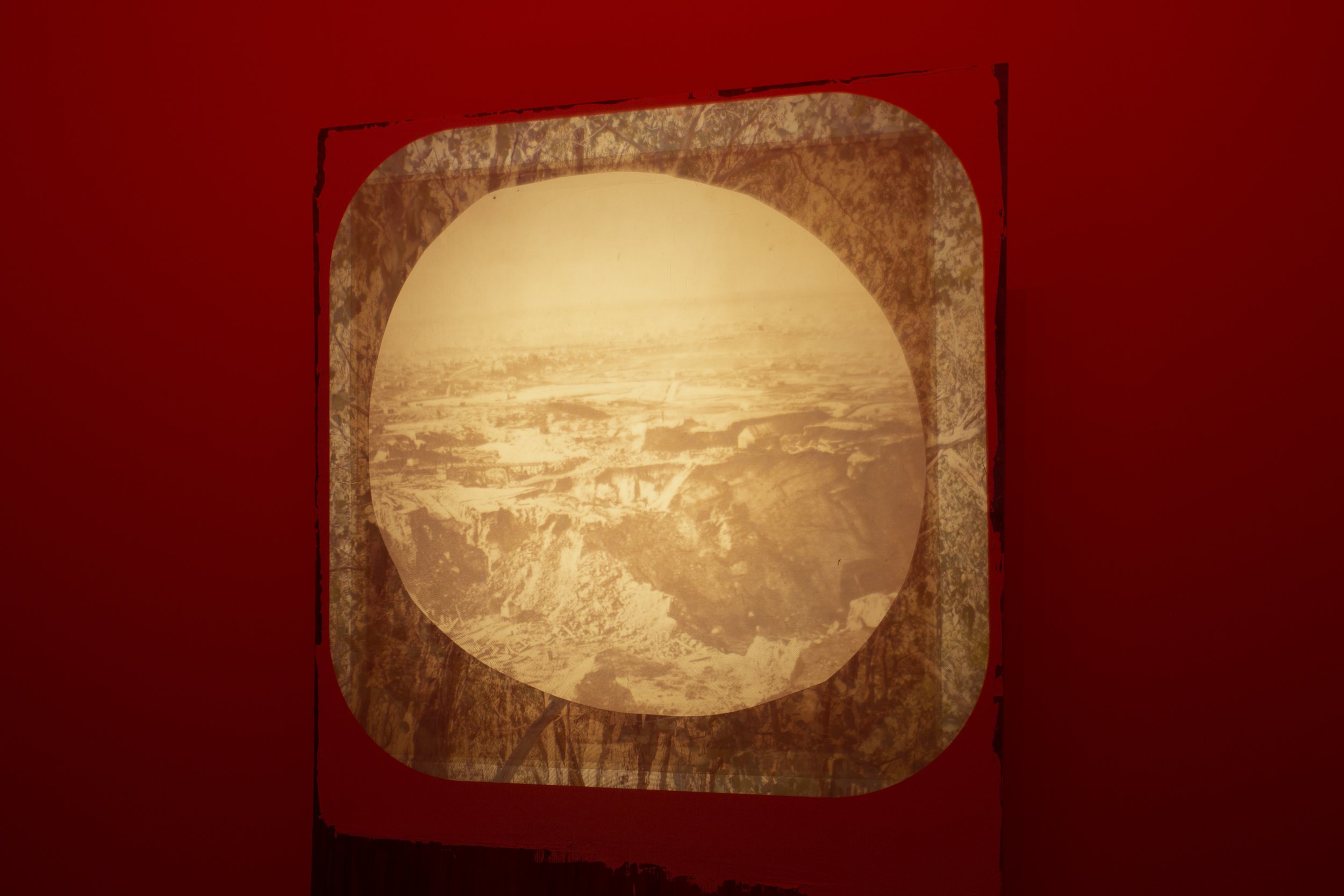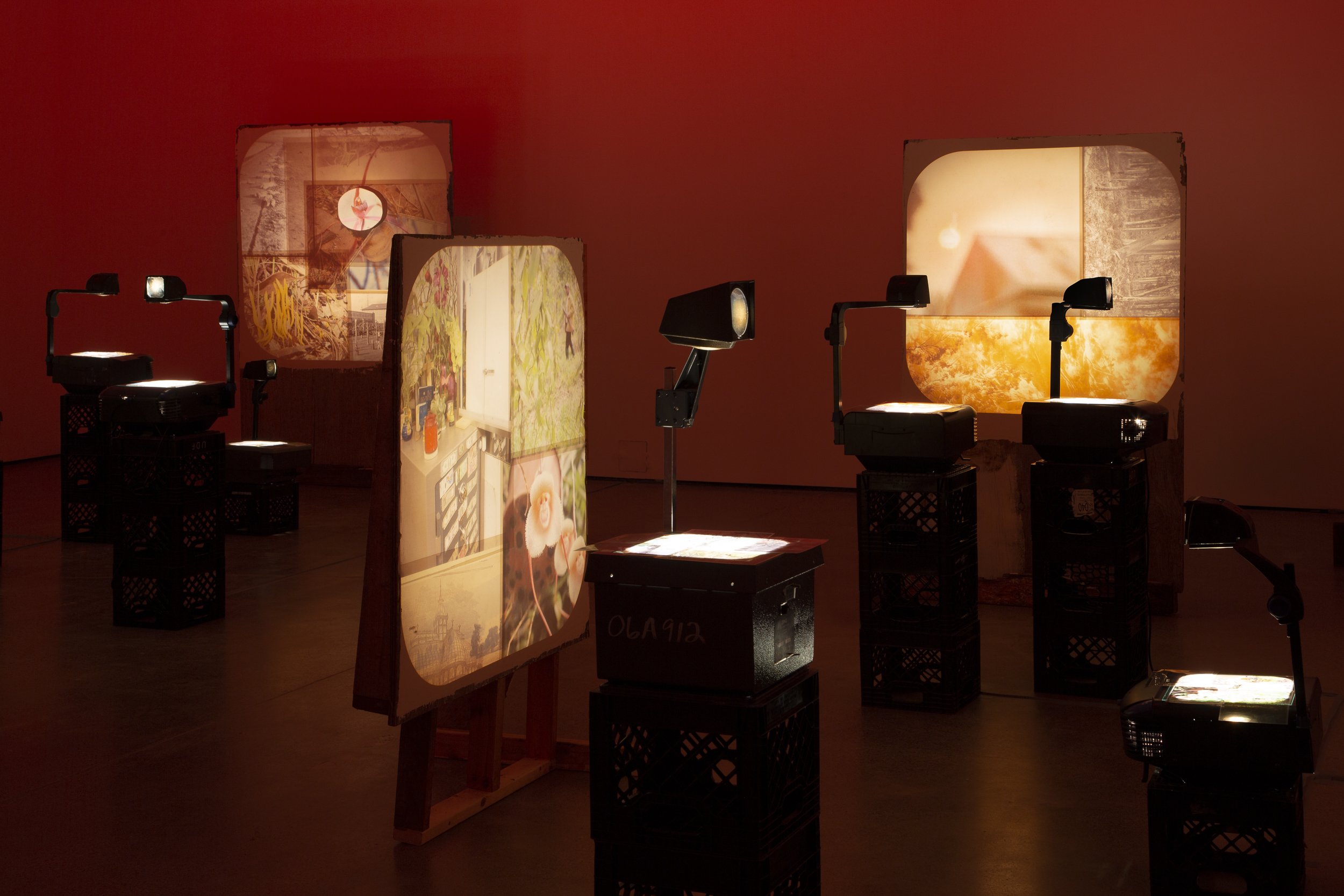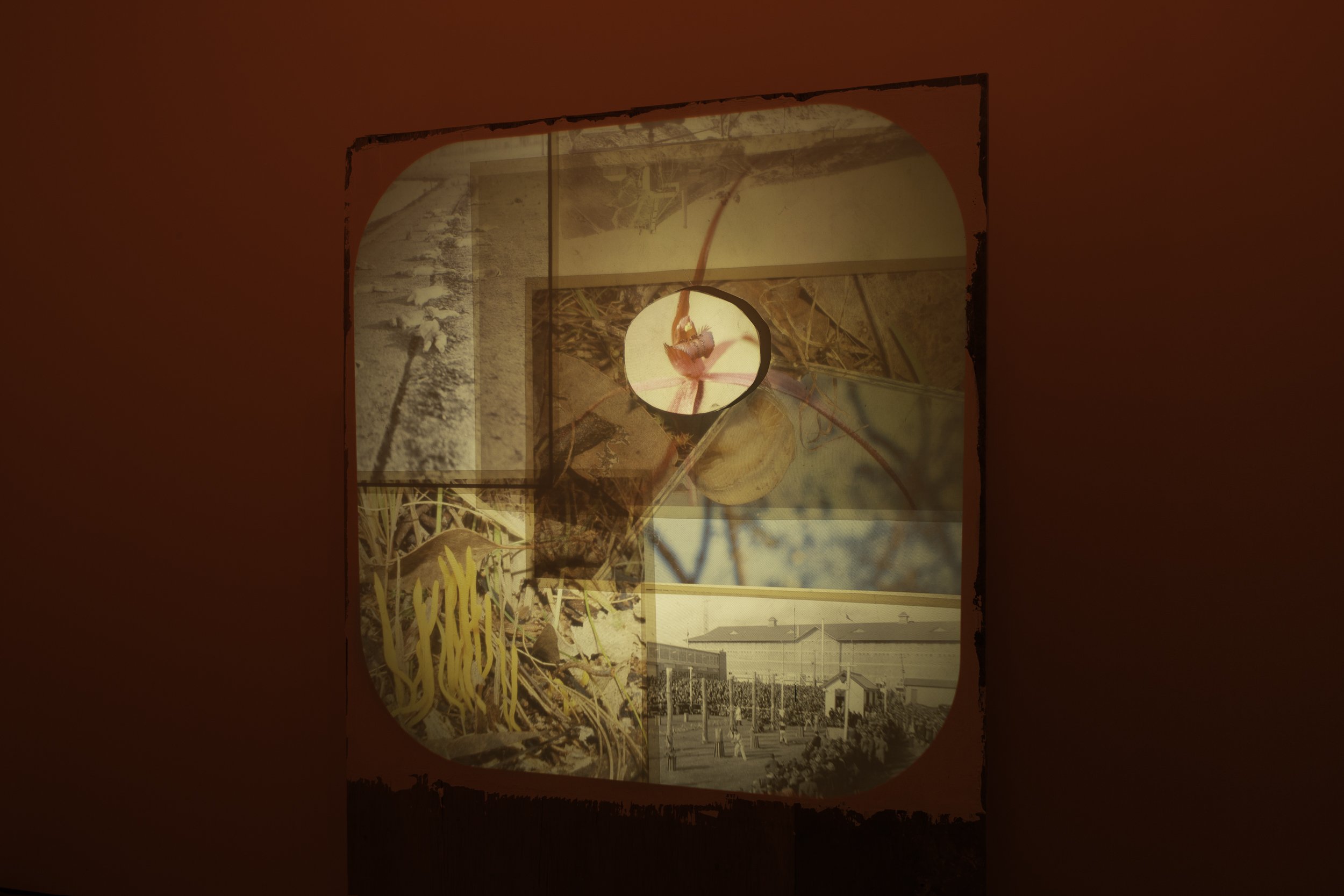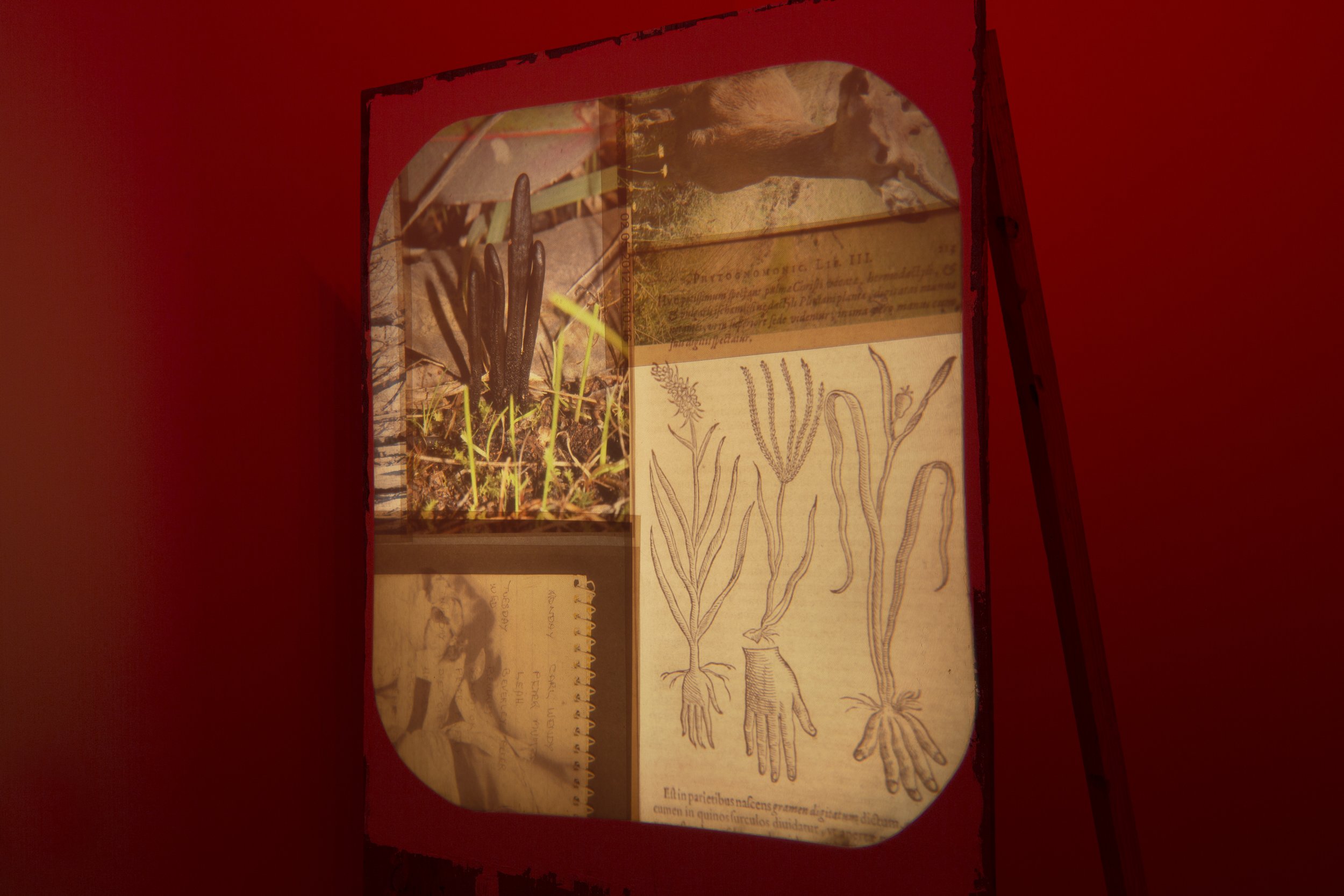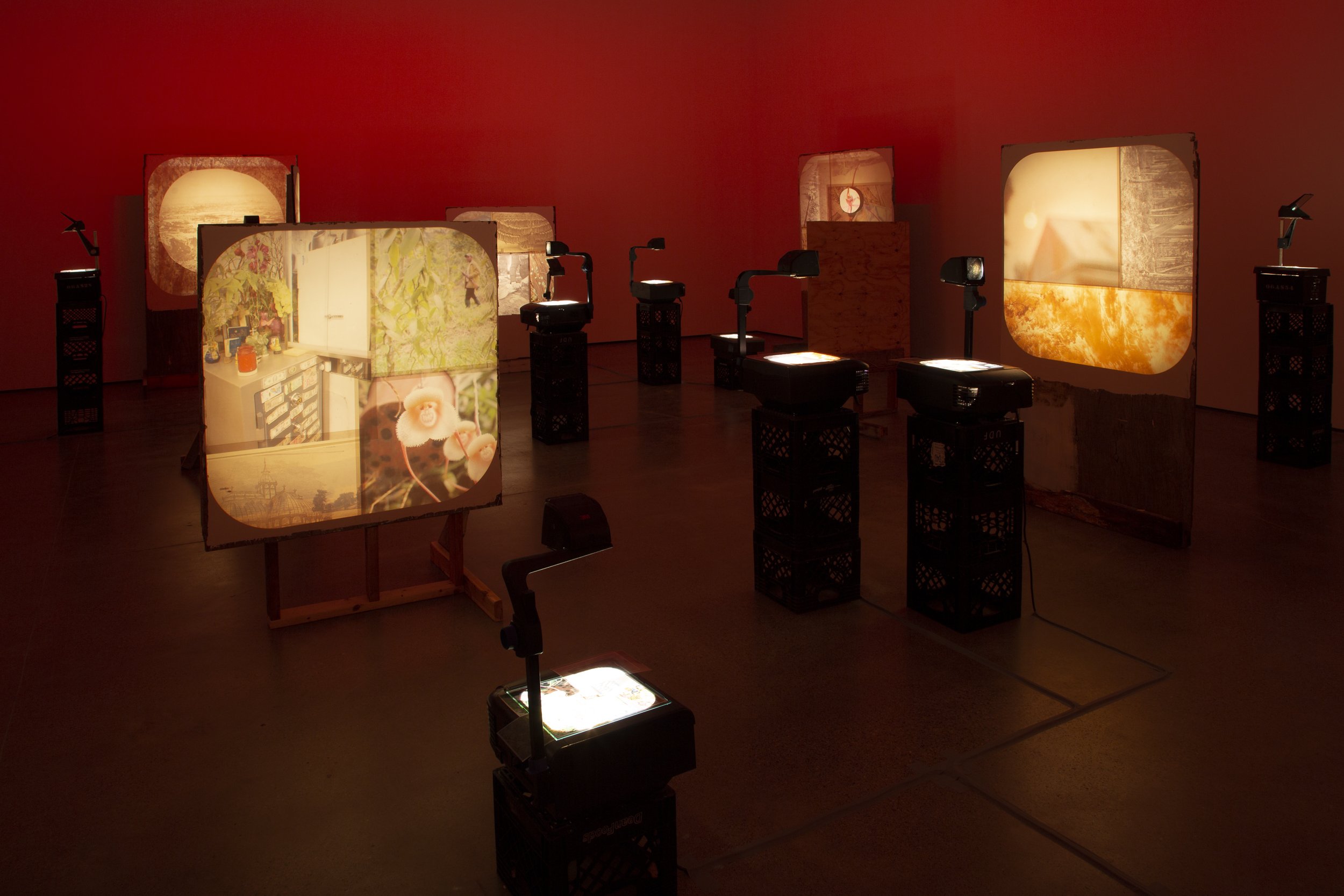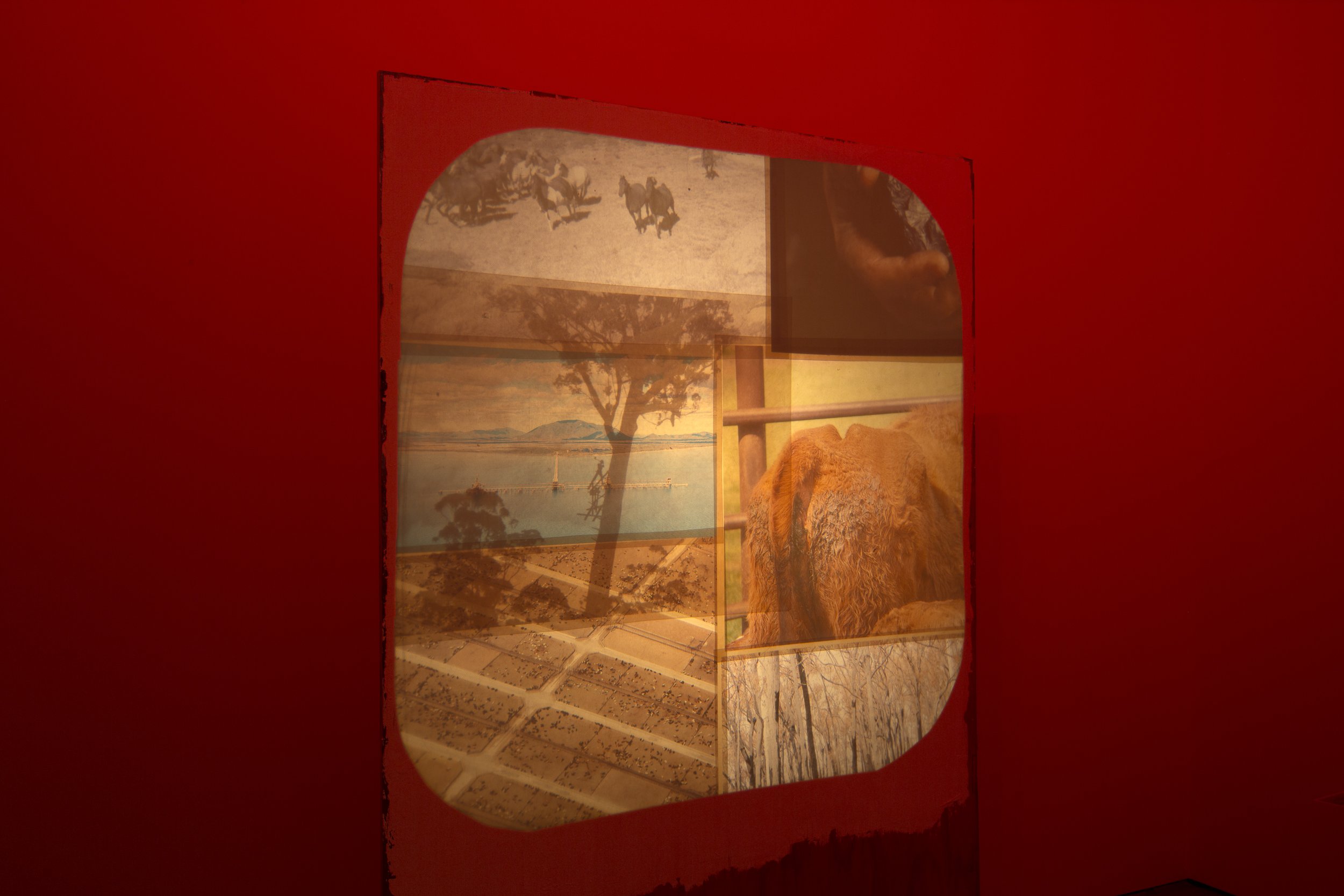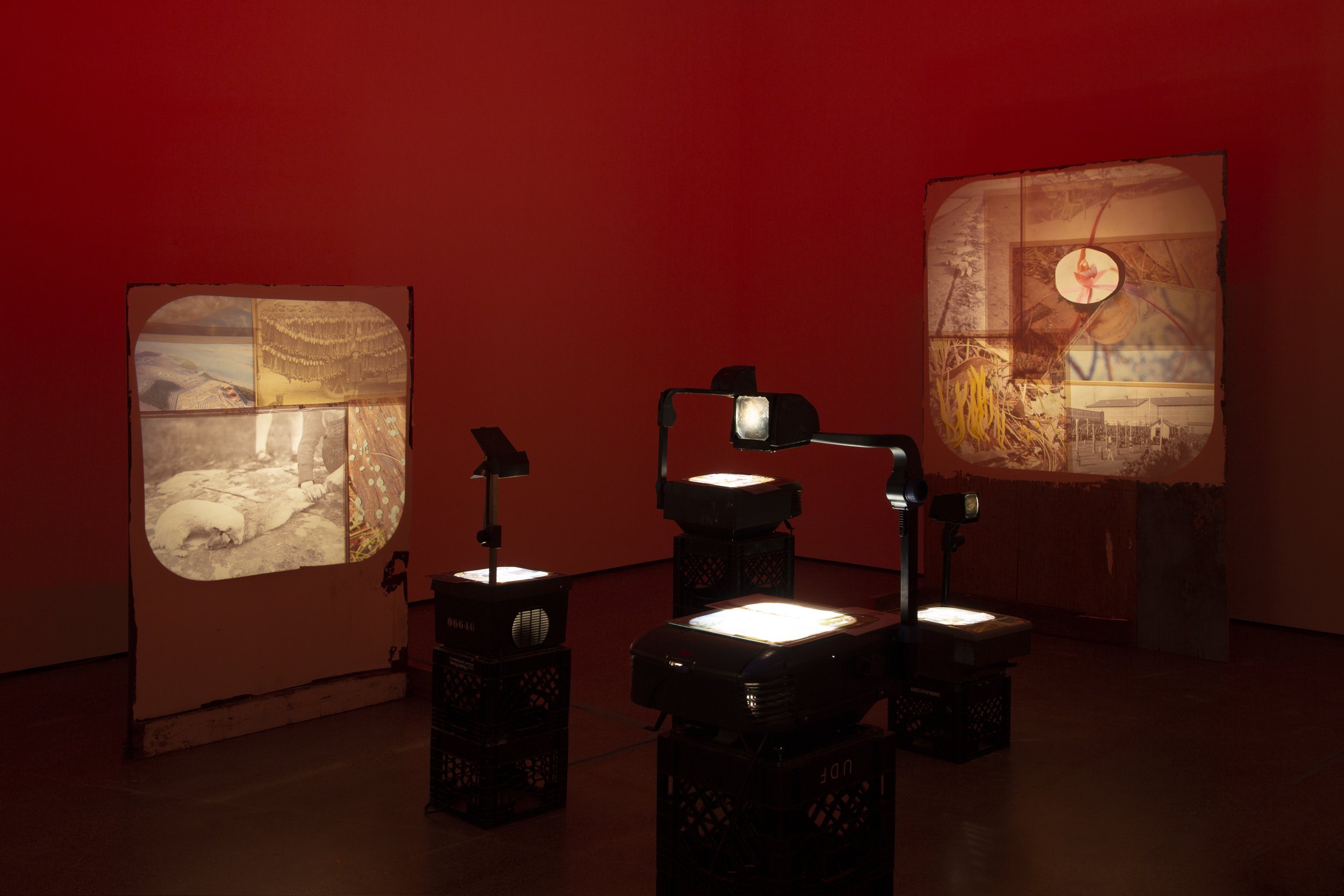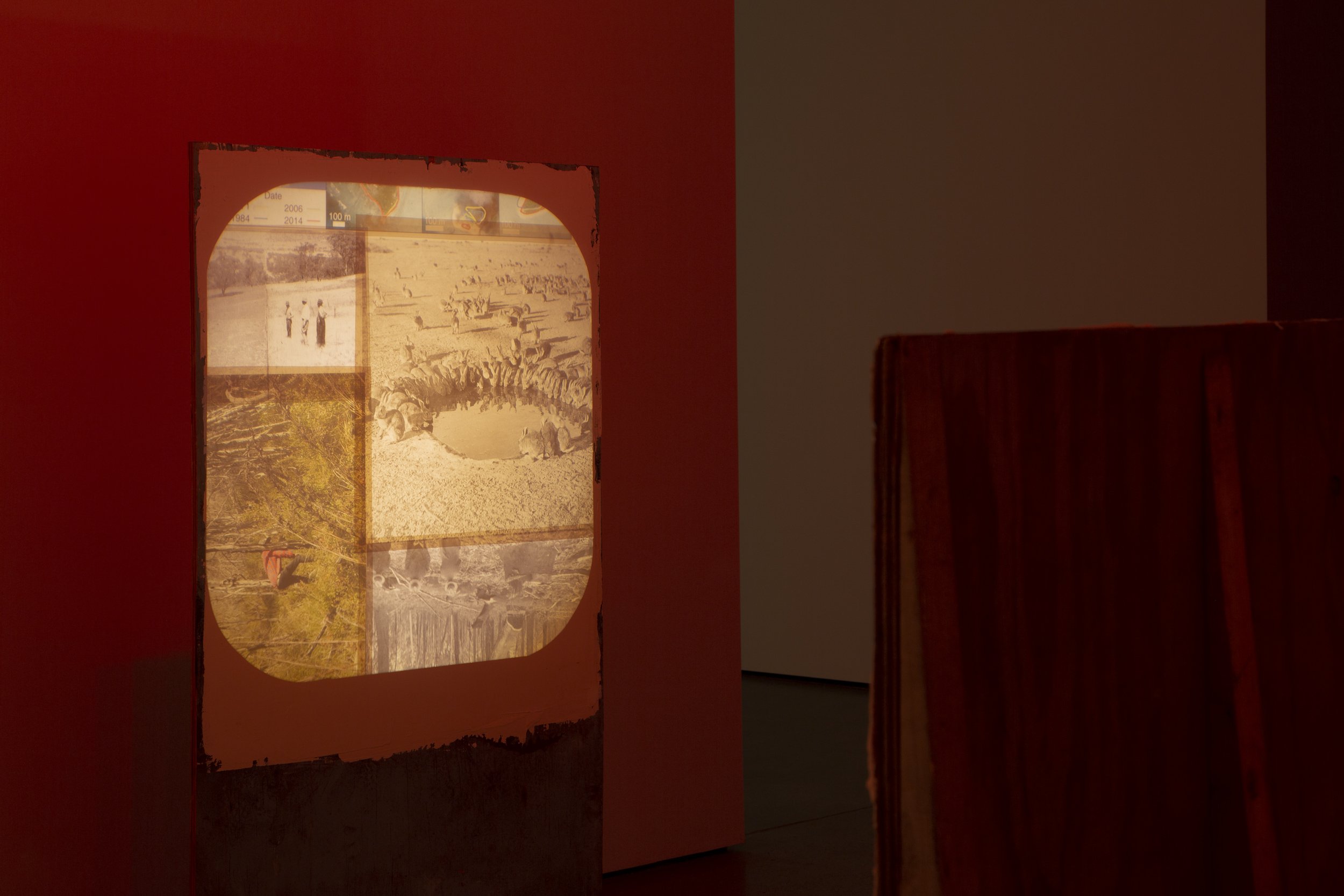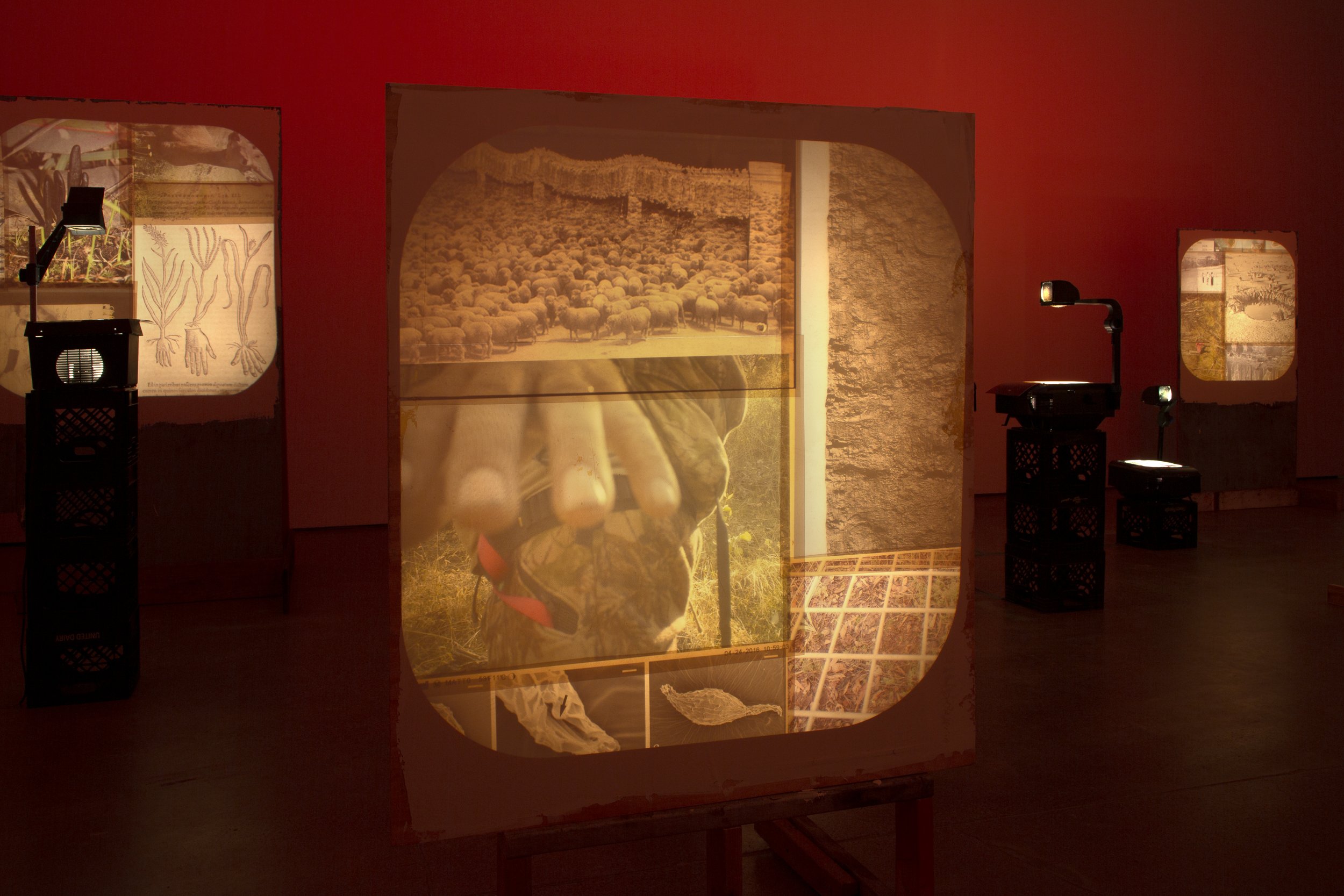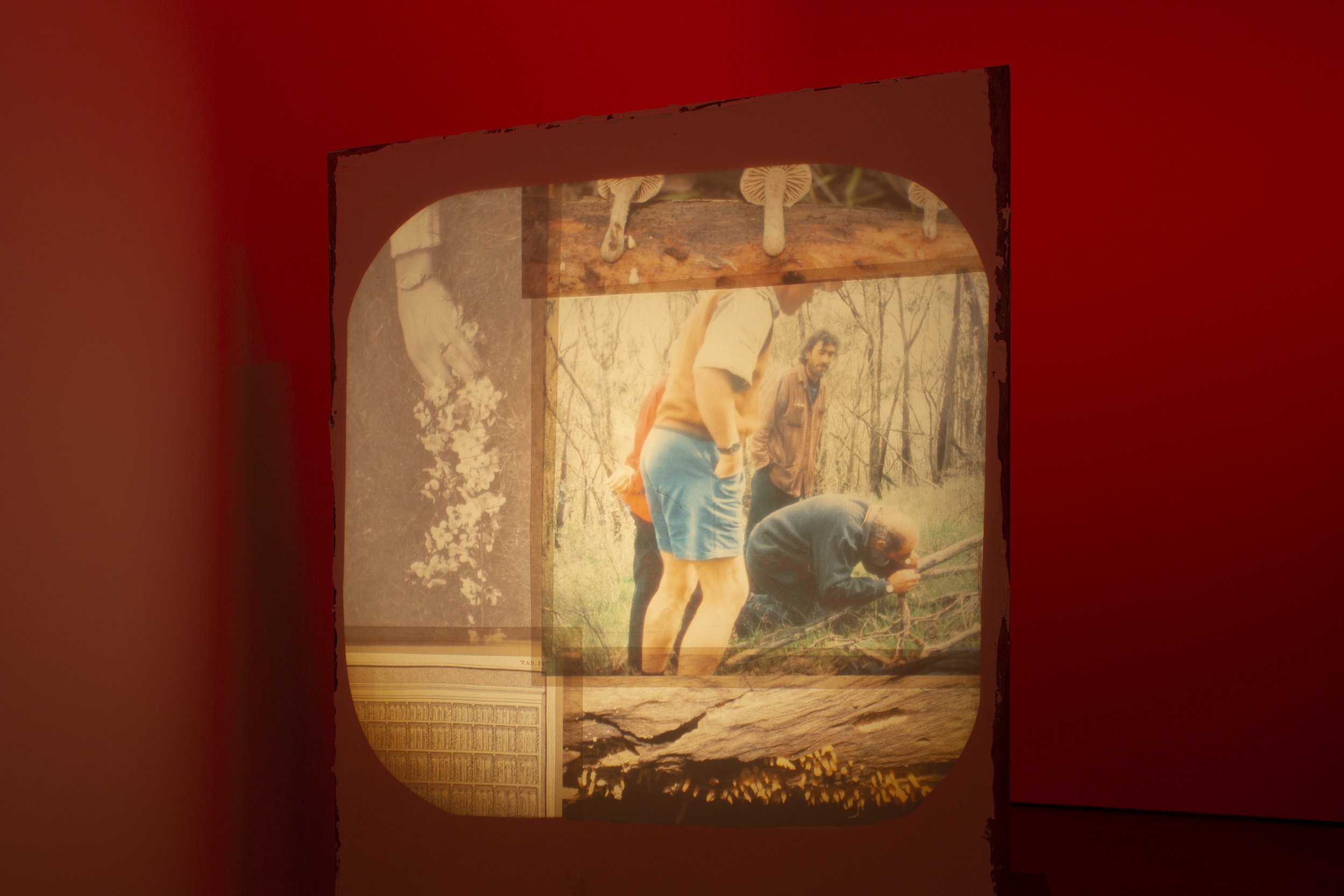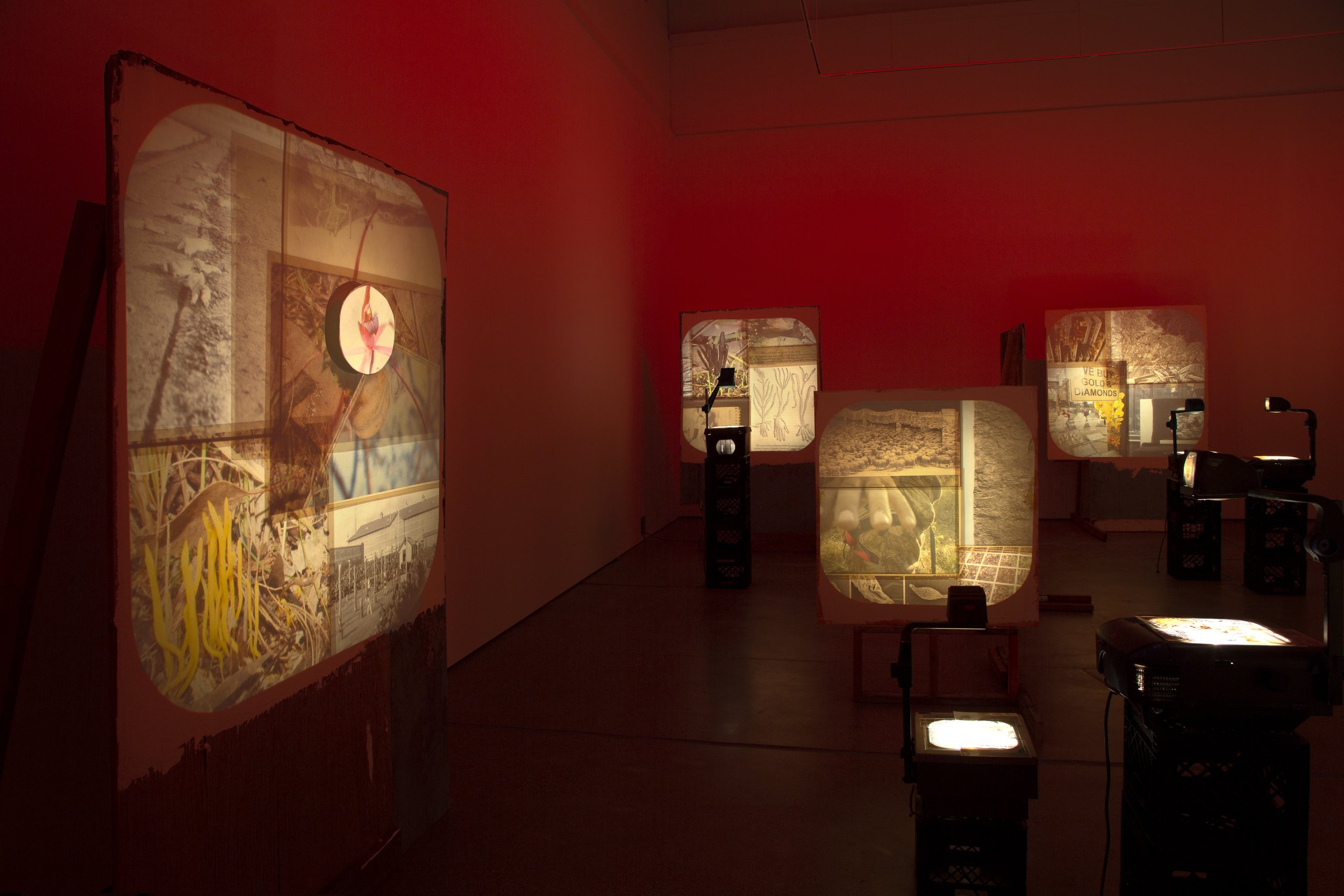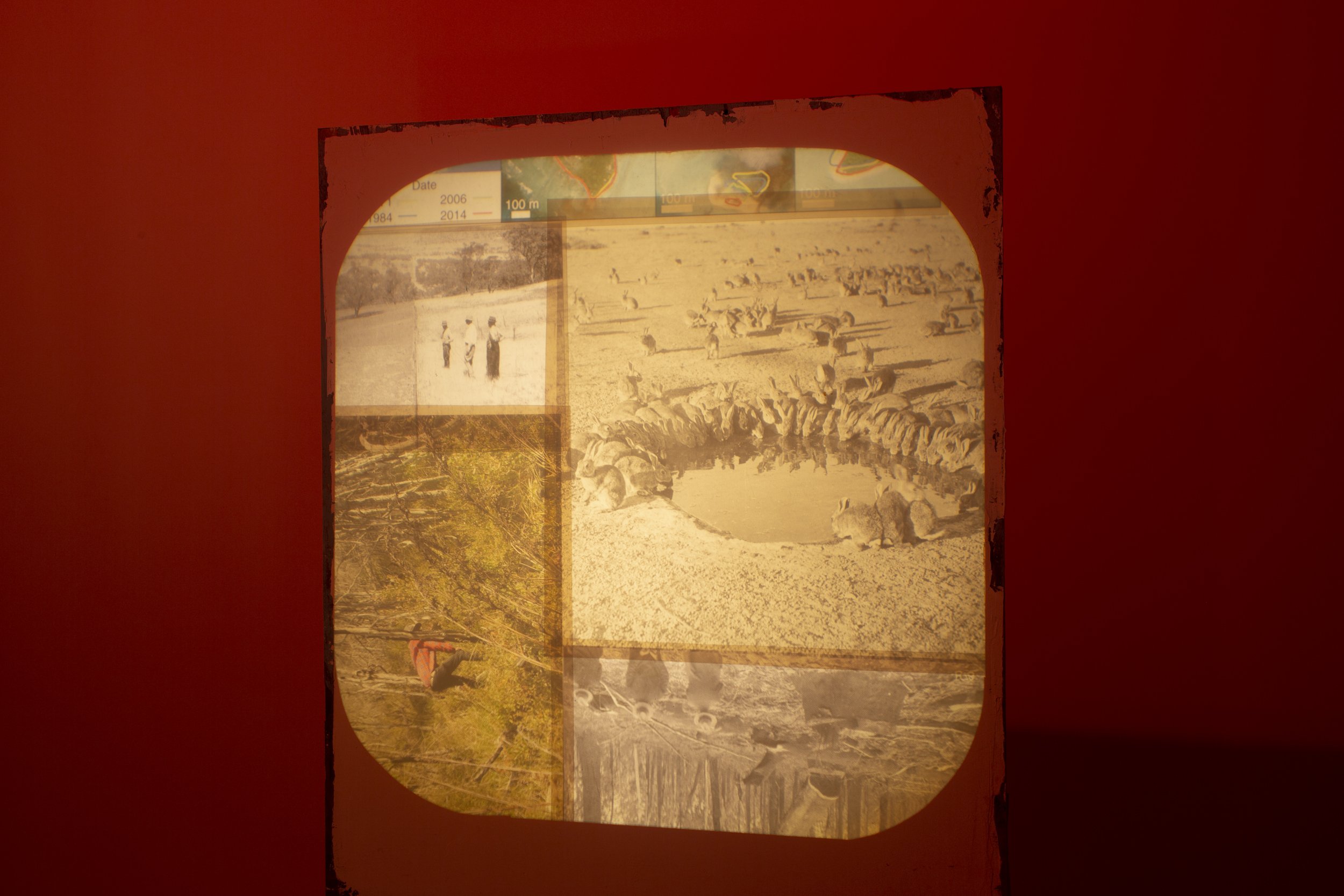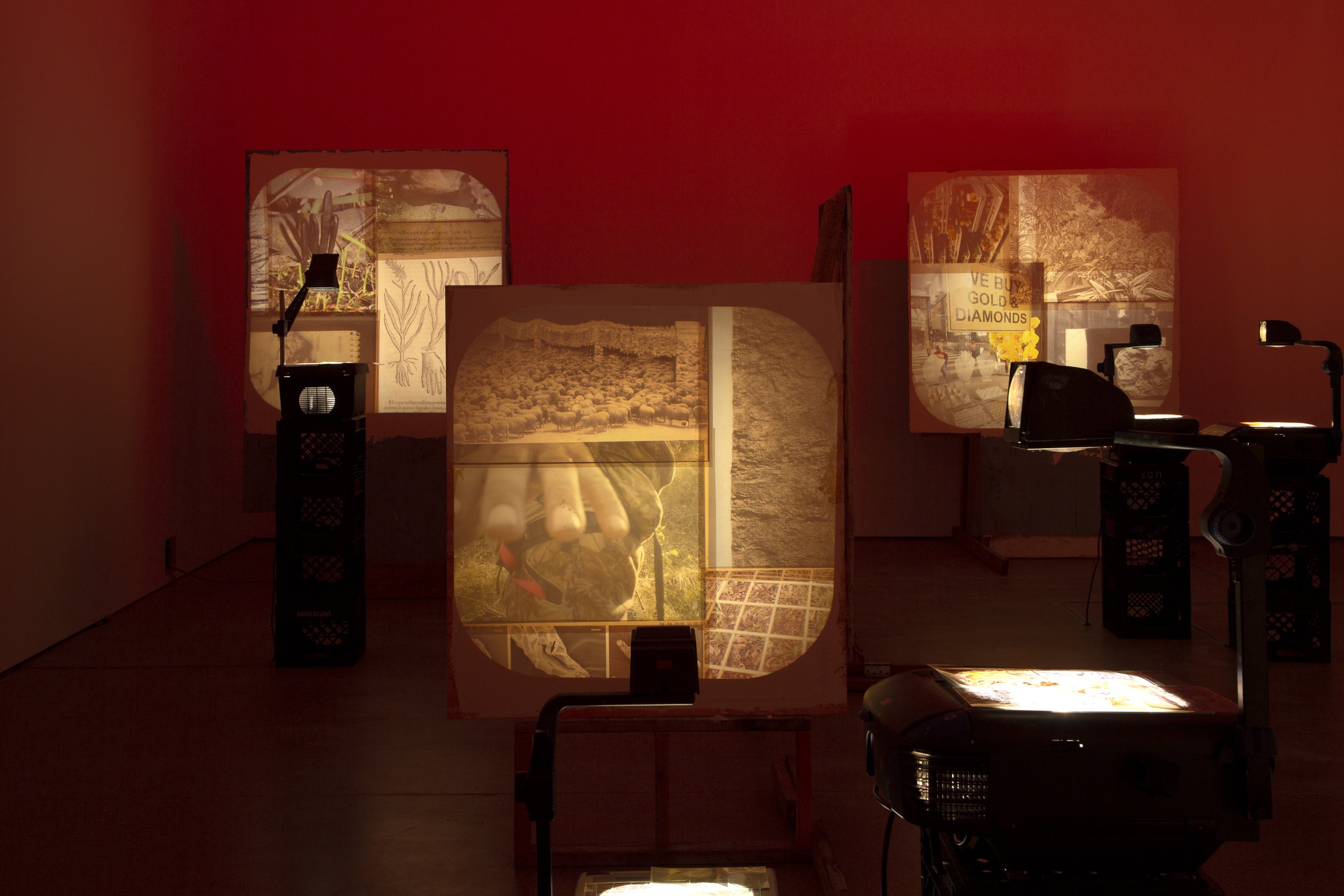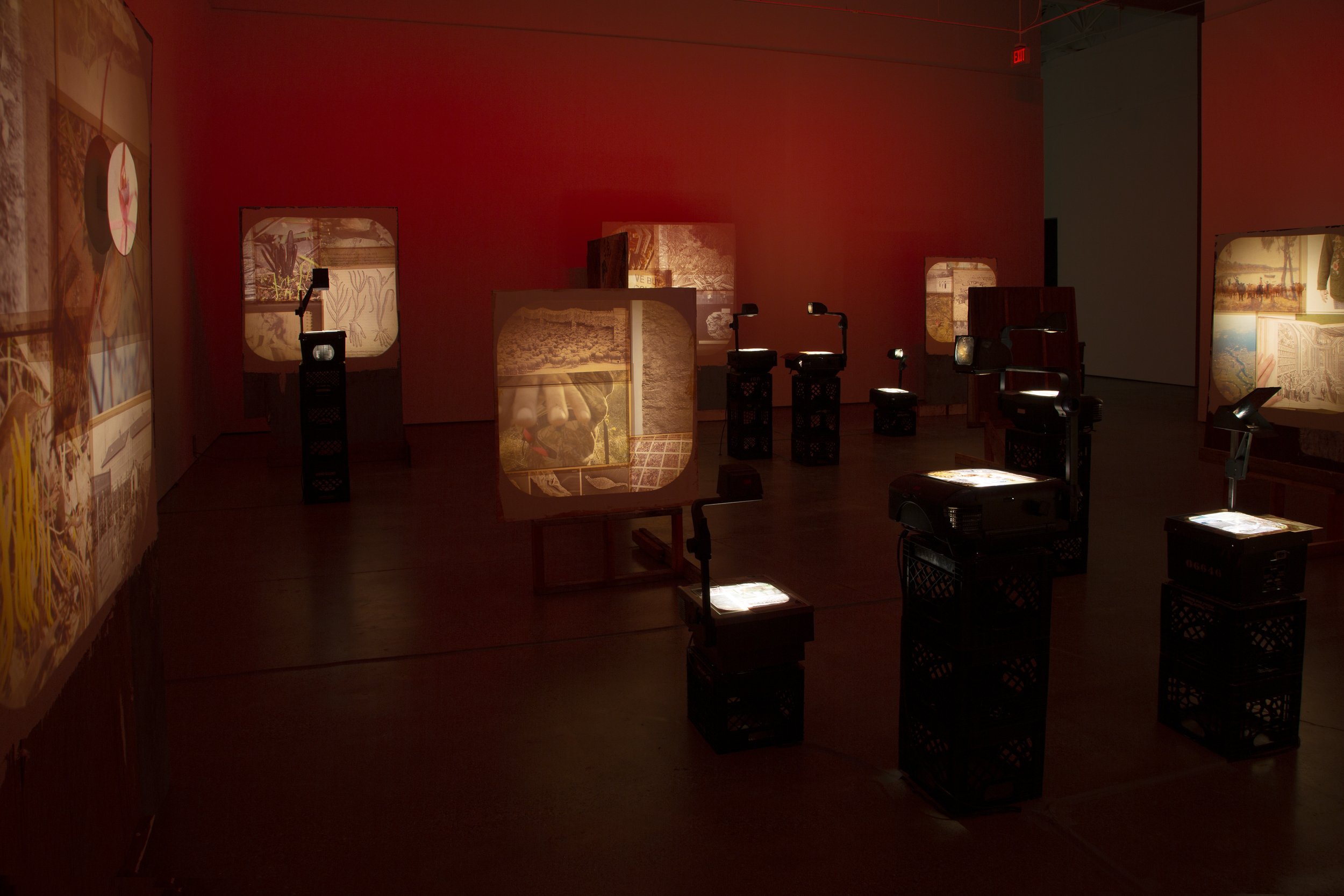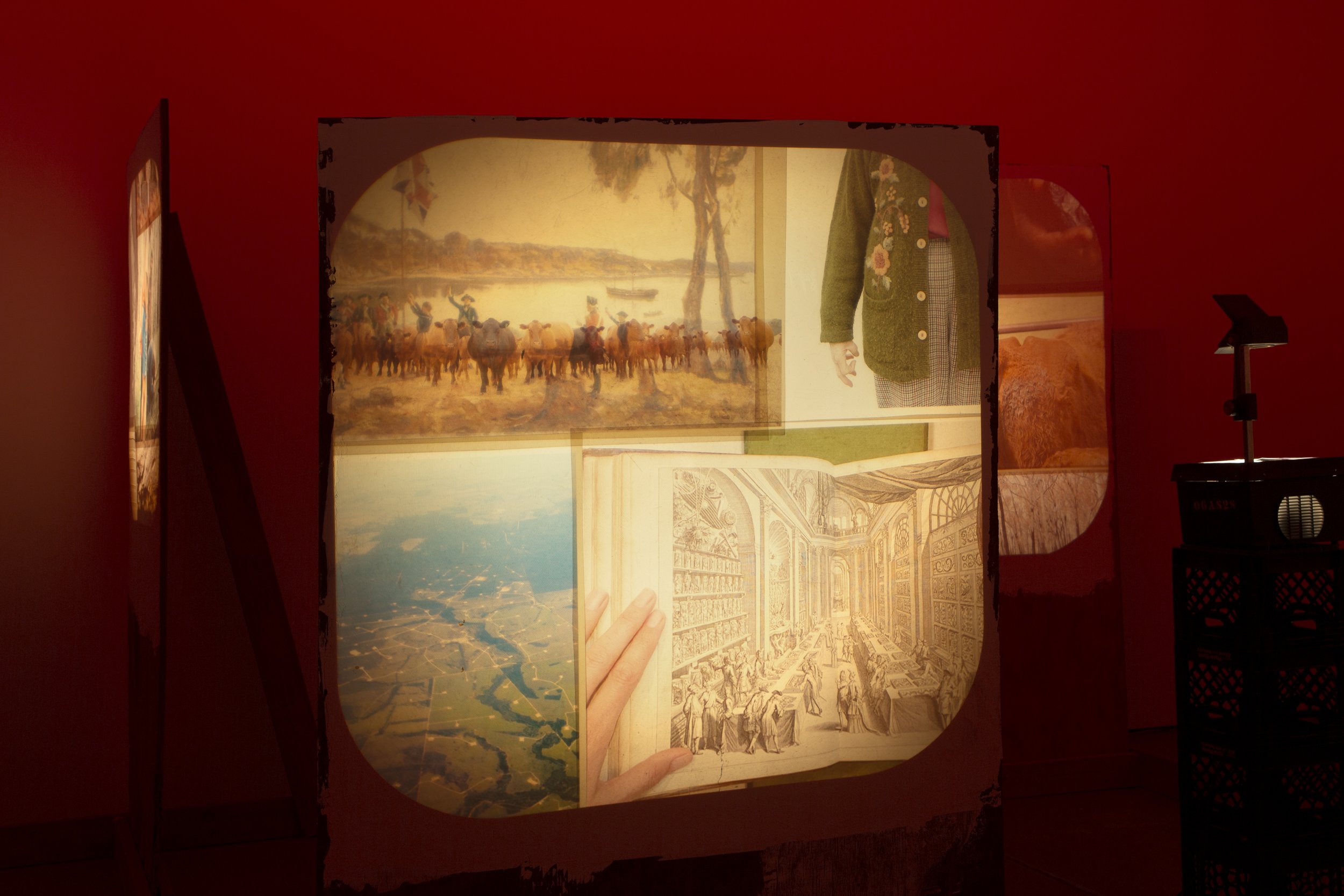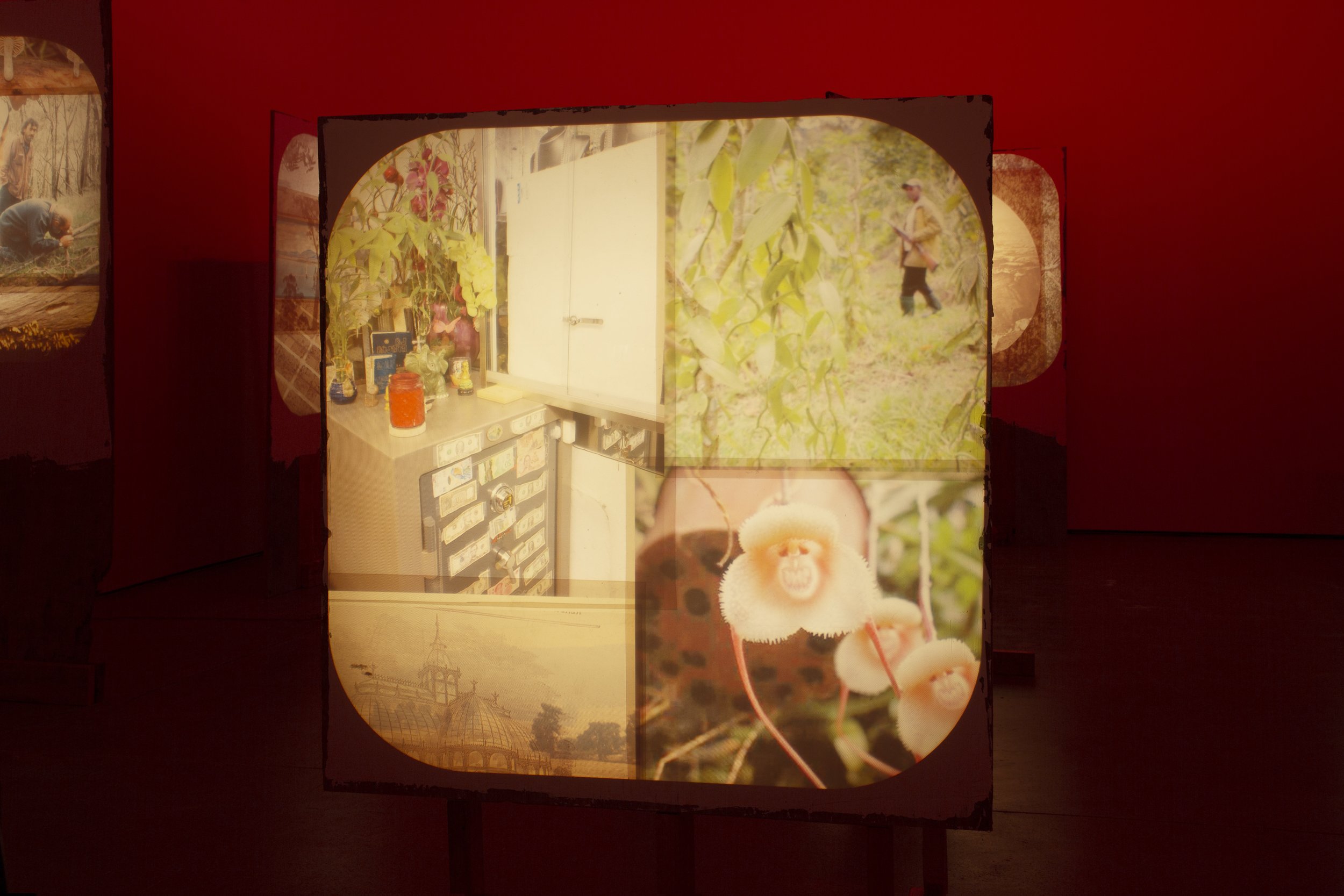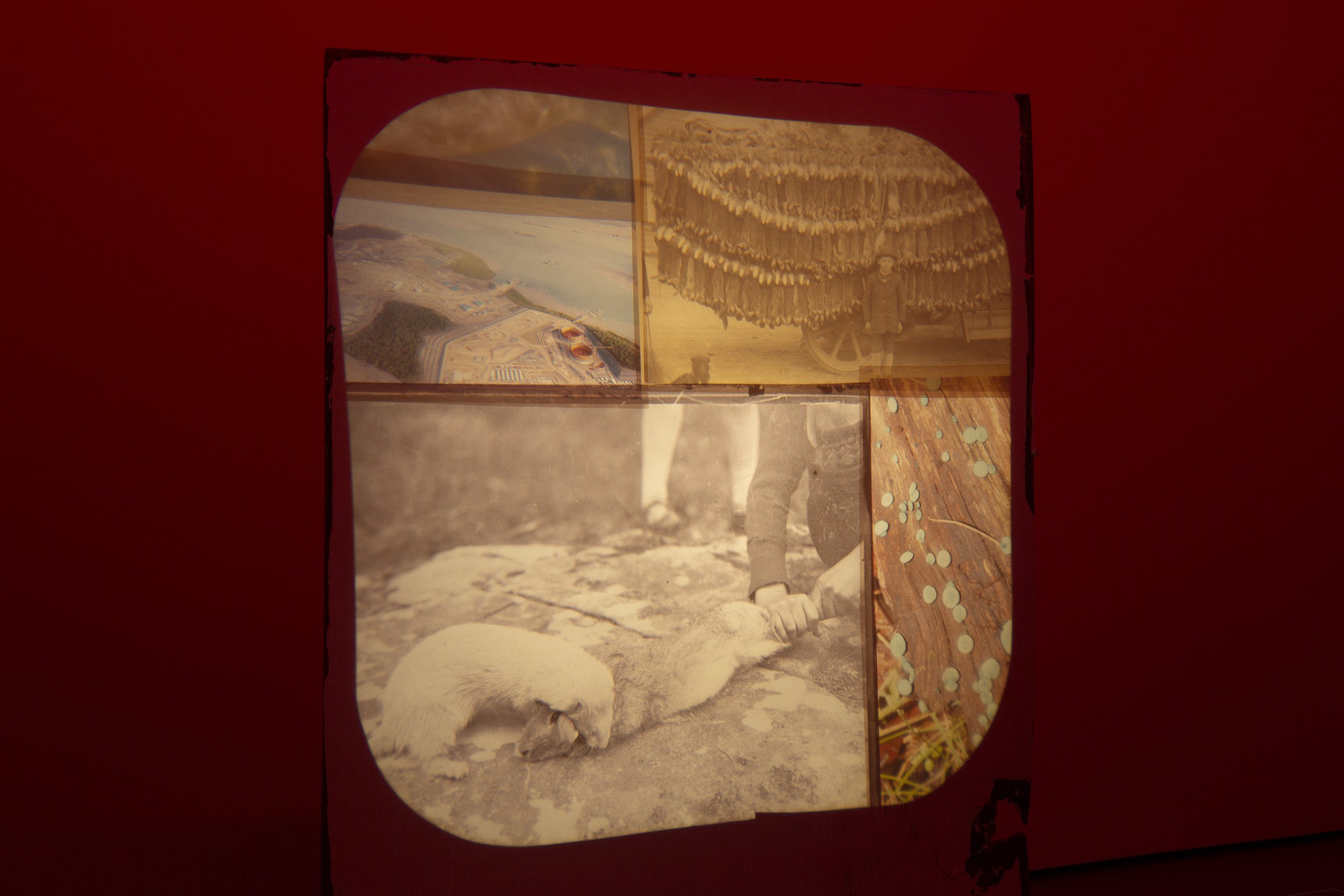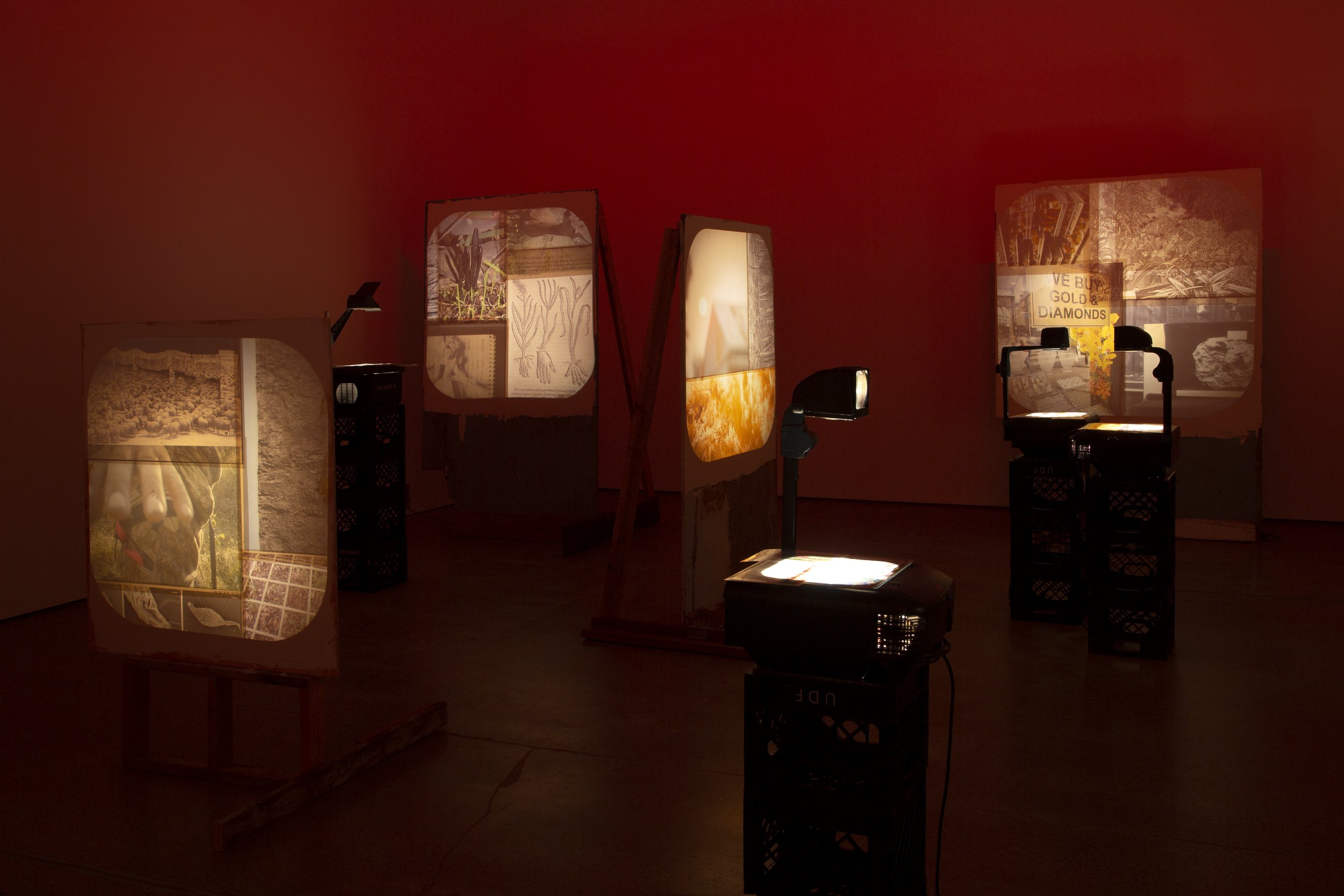A Violent Unmaking
Inkjet prints on digital negative transparency film, overhead analogue projectors, found timber, second-hand milk-crates, gels
A Violent Unmaking uses analogue projection and photographic collage to create an embodied experience centering on ecological violence. The installation maps a historical view of an ecology in crisis by making connections between local changes to a specific Box-Ironbark forest ecology and larger systemic problems caused by the ongoingness of settler colonialism manifested in modernity and neoliberal capitalism in Australia and beyond.
Lyon uses photographic collage as a form of cognitive mapping to communicate the complex web of relations present in an ecology and makes visible threats to the endangered Crimson Spider Orchid (Caladenia concolor), including, introduced species, land clearing and fragmentation, botanical expeditions and over-collecting, settler agriculture, bushfires, and practices of extractivism.
The images are drawn from a multi-year research project that has involved building an ongoing 1500+ image collection via my own lens-based practice, local farmers and community members, local amateur botanists and conservationists, scientists, and state and national archives. The image constellations weave the interconnected facets of exploitation not depicted in mainstream media, making visible the relationship of power and memory.
Through this work the artist asks, how do we make visible the correlations between a search for knowledge and a search for capital in the colonial matrix of power? How has coloniality’s ventures in botany and exploration been masked to hide forms of control and domination that commodify people, land, and the nonhuman? And how can our love for a place, be a position to begin an unlearning and relearning—toward more just forms of living?
Through my artistic practice, I am committed to working toward an environmentally responsible material consumption. This evolving ethic requires continual evaluation and is increasingly urgent when faced with consumer culture and the commodification of the art object. A Violent Unmaking centrally uses second-hand materials, including: older technologies via the overhead analogue projectors, waste timber from building sites around Columbus, and second-hand milk-crates.
